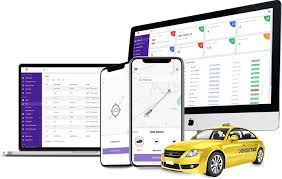The ride-hailing industry has grown exponentially over the past decade, with Uber setting the benchmark for convenient, app-based transportation services. As a result, entrepreneurs and startups across the globe are jumping into this lucrative market using ready-made solutions like a custom Uber clone app. These apps offer a cost-effective, scalable, and faster way to launch a ride-hailing business. However, simply launching a clone won’t guarantee success. To truly thrive, you must customize your app to meet the specific demands of your local market and align with your business goals.
In this article, we’ll walk you through how to effectively tailor your Uber clone app to suit your unique market, whether you’re in a bustling metropolitan city or a developing town with untapped potential.
1. Understand Your Local Market
Before diving into the customization process, you need a deep understanding of your local market. Start by researching:
- User behavior: How do people commute? Are they price-sensitive? Do they prefer taxis, carpooling, or bikes?
- Competitors: Who else is offering similar services? What are their strengths and weaknesses?
- Regulations: Are there local transportation laws you need to comply with? Are driver background checks or vehicle inspections required?
The more data you gather, the better you’ll be at crafting an app that addresses real pain points and stands out from the competition.
2. Choose the Right Features
The beauty of a custom Uber clone app is its flexibility. Unlike a generic template, a custom solution allows you to pick and choose the features that align with your market and brand.
Here are some essential and optional features you might consider:
Core Features:
- Real-time GPS tracking
- In-app payments
- Driver and rider ratings
- ETA and fare estimates
- Trip history
Advanced Custom Features:
- Multiple vehicle types (e.g., economy, luxury, motorbike)
- Local language support
- Scheduled rides
- Carpooling or ride-sharing
- In-app chat support
- Loyalty programs or reward systems
For example, in regions where people prefer budget travel, integrating bike or tuk-tuk options might be a hit. In tourist-heavy areas, adding multilingual support and currency conversion could enhance user experience.
3. Design for Local Preferences
Localization goes beyond language translation. It includes tailoring the app’s look, feel, and user experience (UX) to resonate with your audience.
- Language: Ensure the app supports the local language(s) of your region.
- Currency: Use the local currency with accurate conversion and tax calculations.
- Design Aesthetics: Align your branding and design with local cultural nuances—colors, fonts, and icons can have different meanings across cultures.
- Navigation: Use maps and directions familiar to local users. Google Maps is popular, but in some regions, alternatives like Mapbox, Yandex, or OpenStreetMap may be more accurate.
Investing in localization will help build trust and encourage adoption.
4. Integrate Local Payment Gateways
Offering multiple and localized payment methods is critical to user adoption. While some markets prefer credit cards, others might rely more on cash or mobile wallets like Paytm, M-Pesa, or GoPay. Customizing your Uber clone app to include region-specific payment integrations increases convenience and improves the overall experience for both riders and drivers.
Also, include an efficient and transparent commission management system, enabling seamless revenue tracking.
5. Driver Onboarding and Management
Drivers are the backbone of any ride-hailing app. Streamline the onboarding process to make it easy for drivers to register, upload necessary documents, and get approved.
Depending on local regulations and competition, you may want to offer:
- Training modules for safety and customer service
- Flexible commission structures
- Real-time support and updates via in-app notifications
A smart feature to consider is enabling drivers to switch between ride-hailing and car rental services—something inspired by the Turo clone app model. This hybrid system allows drivers to list their vehicles for rental when not actively accepting rides, adding more income opportunities.
6. Promotions, Referrals, and Loyalty Programs
In competitive markets, offering promotions and loyalty programs can be a powerful growth driver. Customize your app to include:
- First-time ride discounts
- Referral bonuses for both riders and drivers
- Point-based loyalty programs
You can even run geo-specific promotions, such as discounts during local festivals or busy travel seasons.
7. Ensure Scalability and Performance
Even if you’re starting small, you need an app that scales. Your custom Uber clone app should be built on a robust architecture that can handle increasing users, real-time tracking, and high traffic.
Work with developers who can future-proof your app by:
- Using cloud-based hosting
- Building scalable APIs
- Regularly updating the app for security and performance
Don’t forget to integrate analytics to monitor user behavior, trip patterns, and revenue performance. These insights can guide future updates and marketing efforts.
8. Compliance and Data Security
Each region has different data privacy laws. Whether it’s GDPR in Europe or similar frameworks in other parts of the world, make sure your app complies with all necessary data protection standards.
Ensure the app uses:
- Encrypted data storage
- Secure login and authentication (biometrics, OTPs)
- Transparent data-sharing policies
Legal compliance is not just about avoiding penalties; it’s also about building user trust.
Conclusion
Launching a successful ride-hailing business isn’t just about copying what Uber did—it’s about understanding your market, embracing localization, and delivering a seamless, intuitive experience tailored to your users. A custom Uber clone app gives you the foundation, but how you shape it determines your success.
By thoughtfully integrating local features, payment options, driver incentives, and user-centric design, you can position your app as a trusted, go-to solution for transportation in your region.
Ready to disrupt the mobility space in your city? Start with a solid Uber clone platform, but make it yours. Customize smartly, grow strategically, and always keep your users at the heart of your journey.



